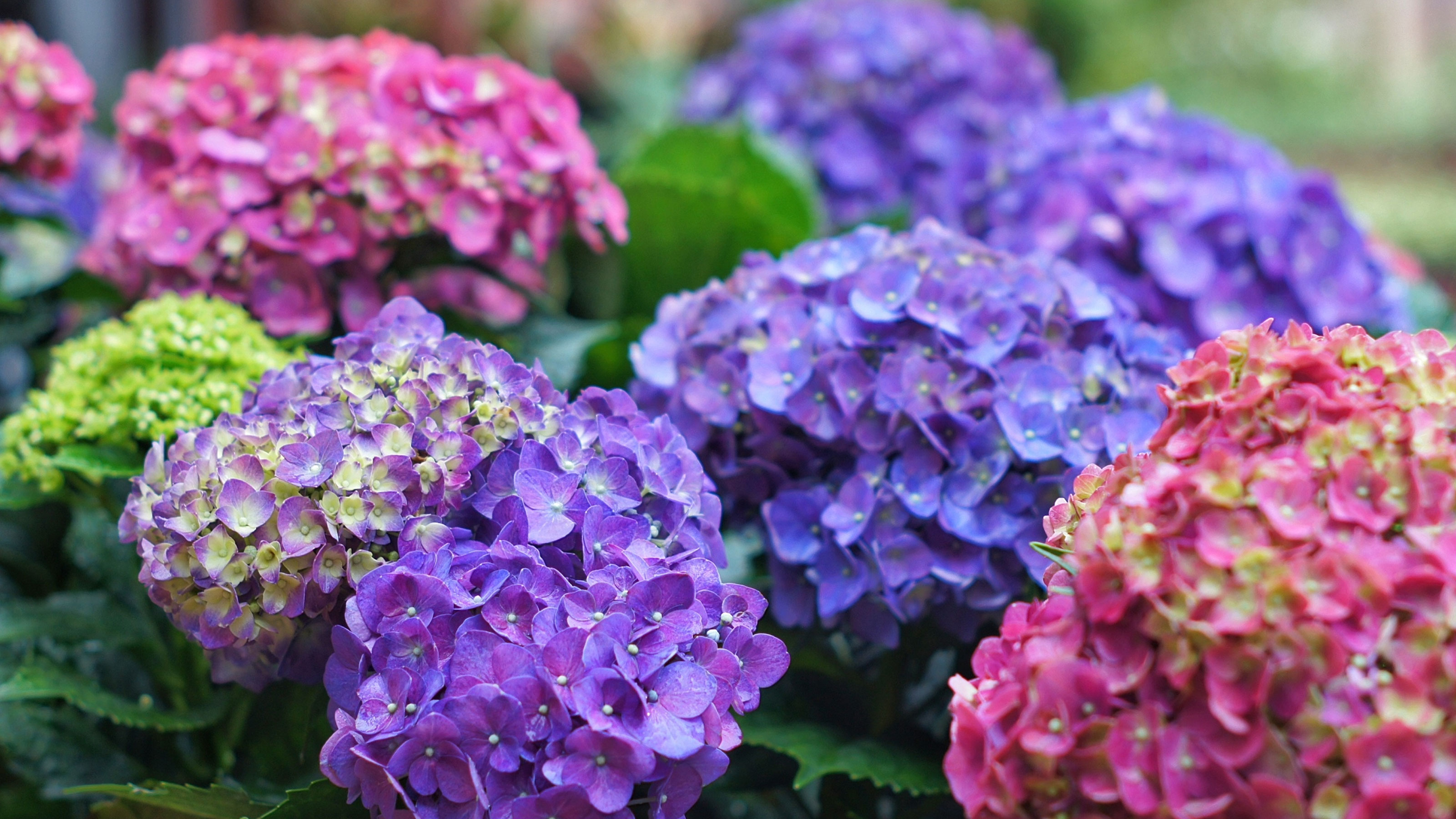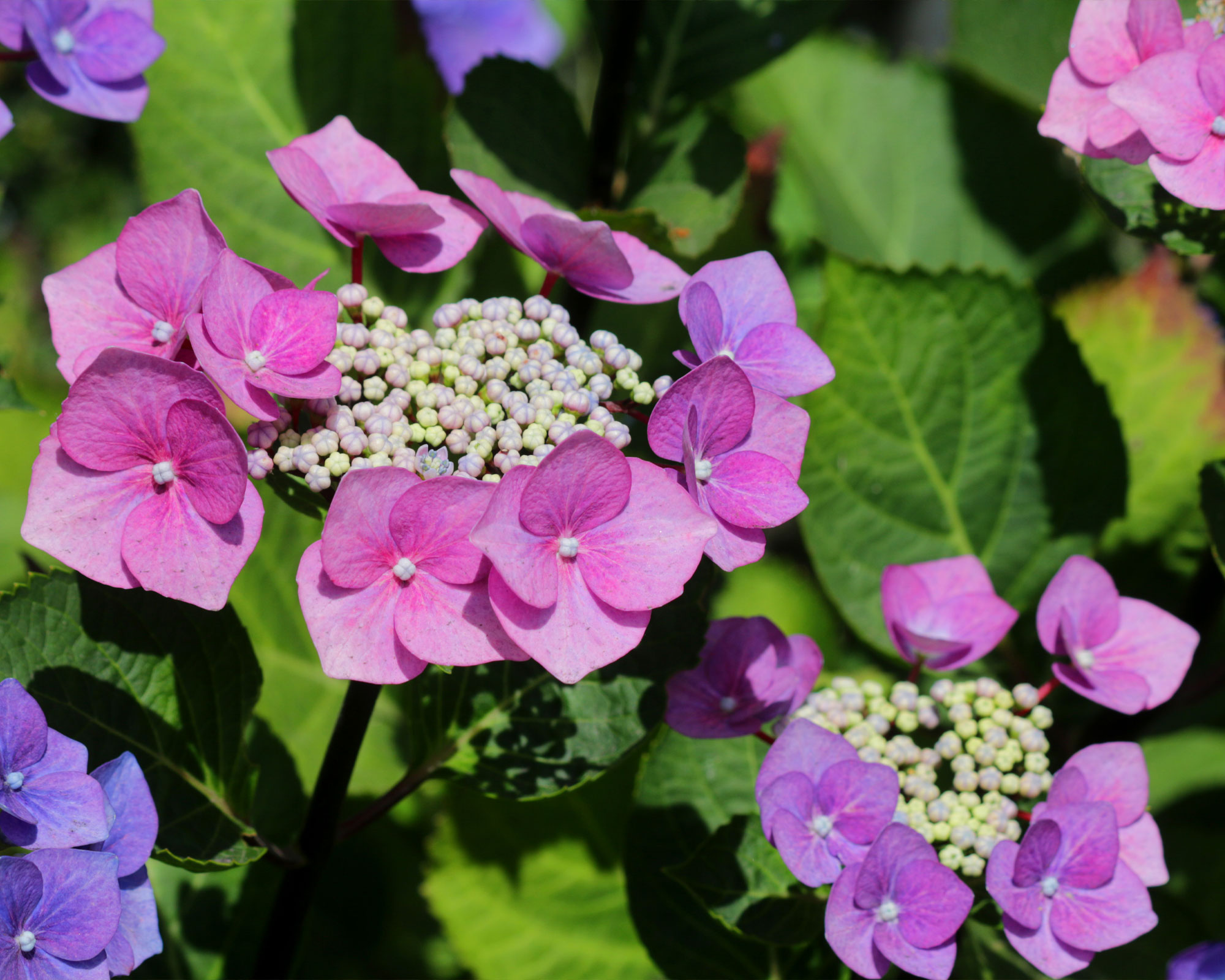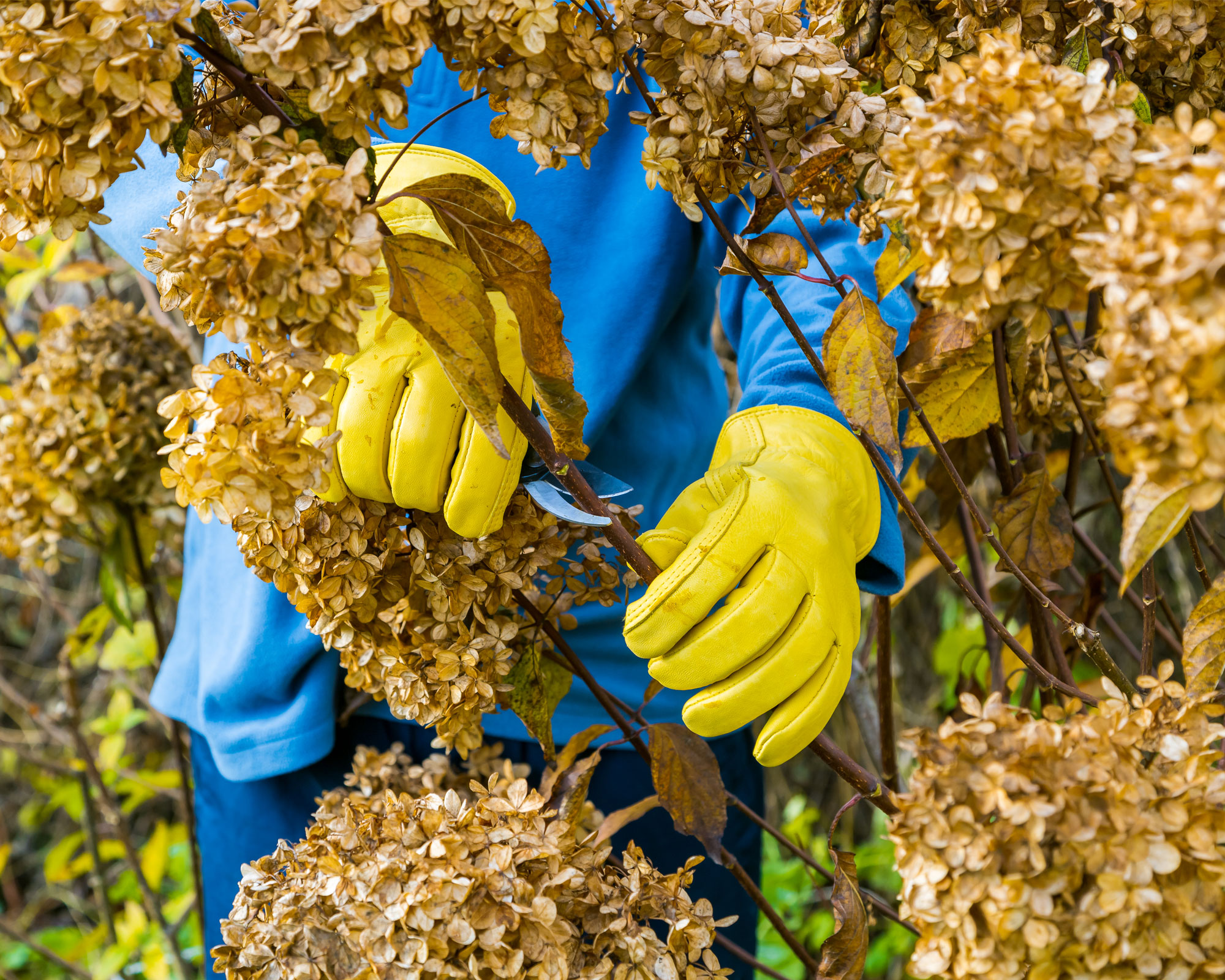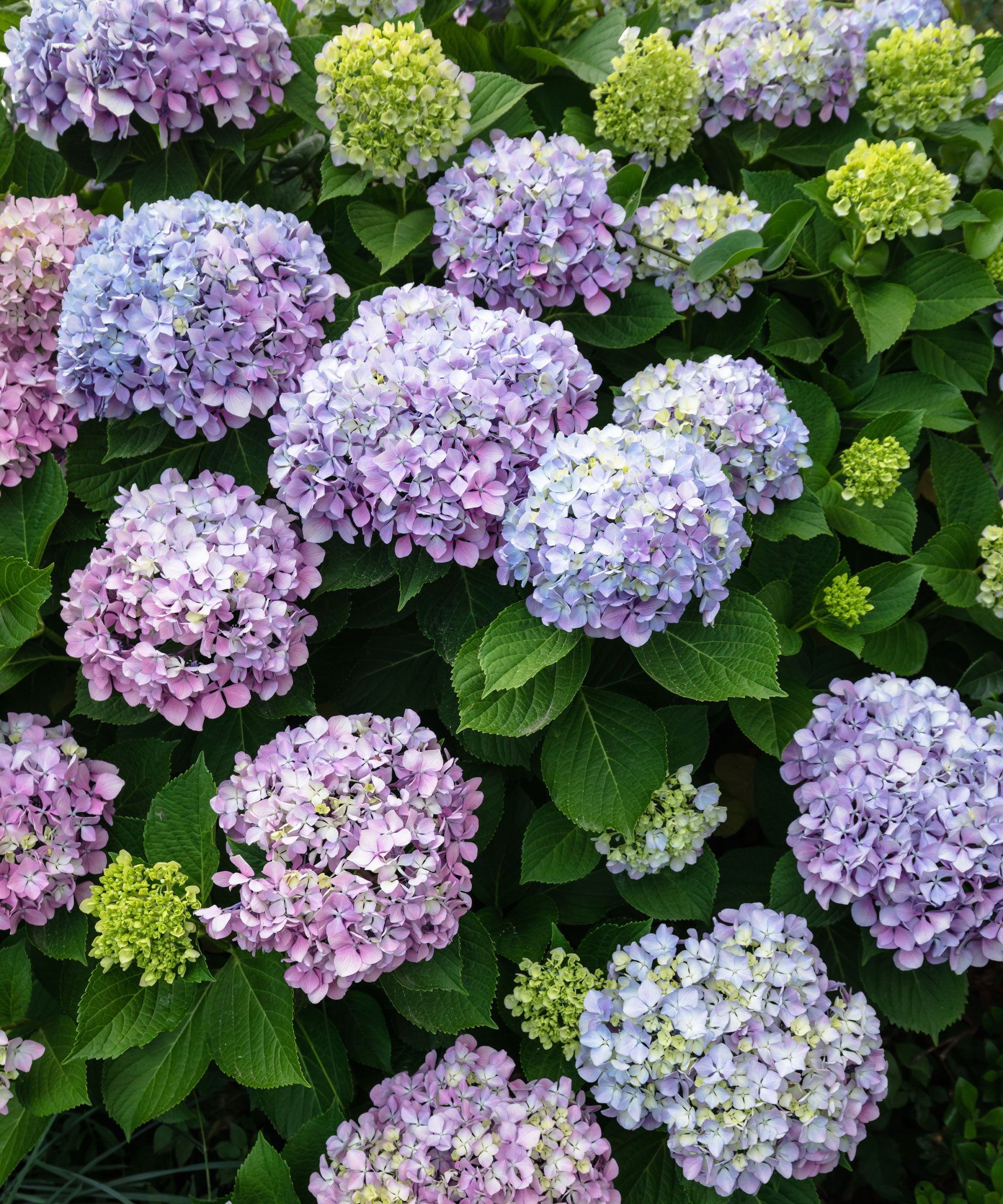When to prune hydrangeas? For a healthy and well-maintained plant
Keep your hydrangea plant blooming for years to come with our guide on when to prune hydrangeas


We explore when to prune hydrangeas so you can keep the hydrangea plant in your garden at its best at all stages of growth.
One of the most popular flowers for the garden, with many of us looking into how to grow hydrangeas, hydrangeas produce beautiful large blooms in a palette of vivid colors, from deep pink to bright blue.
Hydrangeas can do well in both the sun and the shade, making them a versatile and reliable choice for gardens of all shapes, sizes and locations.
When it comes to pruning hydrangeas, it all depends on what type of hydrangea you have. Any hydrangea that produces blooms from new growth will need to be pruned in late winter or early spring. Hydrangeas that bloom on old, woody growth will need to be pruned in summer after they have flowered.
When to prune hydrangeas?
Just like making note of when to plant hydrangeas and how to prune hydrangeas, keeping track of when to prune hydrangeas will ensure your plant is both healthy and looks blooming lovely.
Lorraine Ballato, author and garden writer says, 'depending on which kind of hydrangea you have, the pruning time frames are different. The key issue is to determine if your plant flowers on new wood (the buds it produces in the current season) or old wood (the buds it produced in late autumn the previous year).'
So, whether you have hydrangeas that bloom on old or new growth, or are of the ever-blooming variety, we have spoken to the experts to help you work out what time is best for pruning.
When to prune hydrangeas that produce blooms from new growth

One common question is should I cut back hydrangeas in the fall? If you have a hydrangea plant, such as an Annabelle, Limelight, Quickfire, Burgundy Lace or PeeGee, it will produce blooms from new growth, so the dead areas of the plant need to be pruned in late winter or early spring.
Lorraine Ballato says, 'new wood plants can be pruned anytime they are dormant, that can be in late autumn, winter, and early spring - dormancy for these plants is defined as the time when they have no leaves. It is best to wait to prune until after the winter or where late spring frosts are possible, as winterkill can further reduce the size of a plant that was pruned in late autumn'.
When to prune hydrangeas that produce blooms from old growth

However, many other hydrangea plants, such as Climbing, Oakleaf, Cityline and Mophead hydrangeas, bloom from old growth, so need to be pruned at a different time of year.
For these hydrangeas, if your prune too early, you can destroy new buds, so they need to be pruned in summer.
Lorraine Ballato states, 'old wood plants should be left alone after about August 1st. Stimulation is the exact opposite of what you want to do on old wood plants, they need to spend their energy making buds for next year, not producing stems and leaves that might not survive the winter.
You can prune old wood plants in the late spring after they have broken dormancy. At that time, you will be able to see what has survived and what has not, taking pruners to the dead wood, and/or those stems without flower buds.
Oakleaf and Climbing form their buds for next year well before August, so pruning them in the fall and beyond will necessarily remove those nascent buds. Prune them within about 3-4 weeks after they have flowered. Then hold off until the following season to make your cuts.'
When to prune ever-blooming hydrangeas
Ever-blooming hydrangeas, such as Endless Summer or Blushing Bride, produce blooms from both old and new growth.
For these hydrangeas, the best time to prune is as soon as the blooms have faded in color, this will then allow the plant time to bud for the next year.
Similar to hydrangeas that produce blooms from new growth, garden designer, Maria Palusalu, says, 'prune the old flowers in early spring – February or March – to activate new flowers in the summertime. Prune to the bottom of the plant or cut back the old flowers.'
What happens if you don't prune hydrangeas?

Lindsey Hyland, gardening expert and creator of Urban Organic Yield says, 'premature pruning can remove flower buds and reduces bloom, whereas if you do not prune at all, dead, diseased or damaged wood will prevent new growth.'
Pruning your hydrangeas is essential if you want your plant to create a beautiful display and avoid hydrangea diseases - so ensure you know exactly what type of hydrangea plant you have and prune at the right time of year during its growth cycle.
Sign up to the Homes & Gardens newsletter
Design expertise in your inbox – from inspiring decorating ideas and beautiful celebrity homes to practical gardening advice and shopping round-ups.

Zara joined Homes & Gardens in February 2022 as a Content Editor. After studying English Literature at University, she worked as an Ecommerce Website Editor, Content Writer and Buying Intern at multiple independent businesses within the luxury retail and lifestyle sectors. Her role at Homes & Gardens unites her love, experience and passion for the world of design and desire to create inspiring written content. She enjoys nothing more than discovering new trends, brands and products, whether that be in fashion, interior design or lifestyle.
-
 The 11 British interior design styles you are going to want to bring into your home – no matter which side of the pond you live on
The 11 British interior design styles you are going to want to bring into your home – no matter which side of the pond you live onInterior designers share their favorite British design trends and how to recreate them in your own home
By Pippa Blenkinsop Published
-
 7 ways to decorate with wood – designers share the best ways to make the most out of this versatile material
7 ways to decorate with wood – designers share the best ways to make the most out of this versatile materialThis is how the design experts embrace the timeless natural beauty of decorating with wood
By Karen Darlow Published